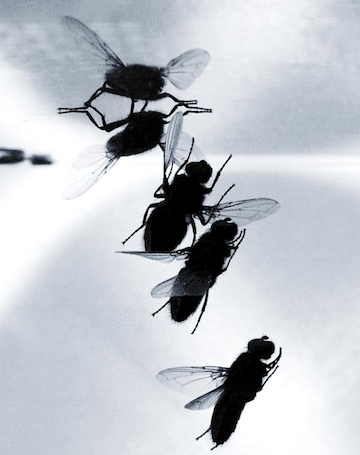
How flies land upside-down
By DE Staff
AutomationPenn State researchers dissect complex acrobatic manoeuvre to inspire future advanced robotics.

A Blue Bottle fly executing the complex procedure of landing upside-down, caught by slow motion camera. (Photo credit: Bo Cheng, Penn State)
“Through this work, we sought to understand how a fly executes the maneuvers of landing upside down in the blink of an eye,” he said. “Ultimately, we want to replicate that in engineering, but we have to understand it first.”
Using a flight chamber and high-speed videography, the research team found that the insects usually execute four perfectly timed maneuvers. Flying insects first increase their speed, then complete a rapid “cartwheel” maneuver, perform a sweeping leg extension and, finally, land through a leg-assisted body swing when their feet are firmly planted on the ceiling – all made possible by a series of complex visual and sensory cues.
“Within the blink of an eye, these flies can totally invert their body and land, which is quite spectacular,” said Jean-Michel Mongeau, assistant professor of mechanical engineering at Penn State. “We see it all the time happening around us, but we’ve demonstrated the complexity of the maneuver. There is a lot of interest for robots to be able to do the same.”
However, current robotic technology lacks the speed and efficiency needed to execute the same maneuvers. To achieve that lightning quick reaction and coordination, the research will also have implications for neuroscience, the researchers say.
“How is a fly’s nervous system able to do this so quickly?” Mongeau said. “This work reiterates how fast these maneuvers are executed within an extremely small nervous system. This data can lead to new hypotheses for understanding how brains function.”
www.psu.edu
